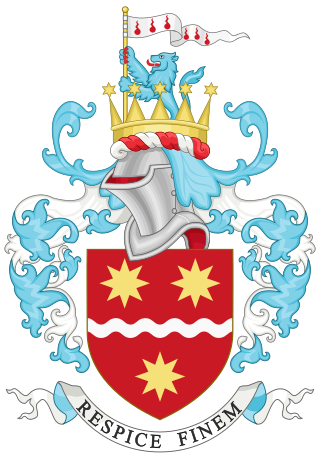
The London Oratory School, also known as "The Oratory" or "The London Oratory" to distinguish it from other schools, is a Catholic comprehensive secondary school for boys aged 7–18 and girls aged 16–18 in West Brompton. Founded in 1863 by The Fathers of The London Oratory then in Chelsea, London, it is historically linked to two fellow Oratorian institutions: the nearby Brompton Oratory and The Oratory School in Oxfordshire. The school is known for the quality of its choral and instrumental music and is one of England's oldest Catholic schools. The London Oratory School was named in The Sunday Times as one of the 'Top 10 Comprehensive Schools in the UK' for both 2022 and 2023.

The King's School, Worcester is an English private day school refounded by Henry VIII in 1541. It occupies a site adjacent to Worcester Cathedral on the banks of the River Severn in the centre of the city of Worcester. It offers mixed-sex mainstream education that follows the UK National Curriculum to around 1,465 pupils aged 2 to 18. At age 11, approximately two thirds of pupils join the senior school from its two prep schools, King's Hawford and King's St Albans, while others come from maintained schools in the city of Worcester and the surrounding areas that include Malvern, Redditch, Kidderminster, Evesham and Pershore.
King William's College is an independent school for pupils aged 3 to 18, located near Castletown on the Isle of Man. It is a member of the International Baccalaureate and Headmasters' and Headmistresses' Conference organisations. The College operates at two sites in or near Castletown: a main senior school campus on the shore of Castletown Bay, and a prep school in the Westhill part of Castletown, two miles from the main campus. The College was originally for boys only, but became co-educational in the 1980s. It has roughly five hundred pupils, many from beyond the British Isles.

Campbell College located in Belfast, Northern Ireland and founded in 1894 comprises a preparatory school department and a senior Northern Ireland 'Voluntary Grammar' school, the latter meaning, in terms of provision of education, a government funded, selective school.

King Edward's School (KES), Bath, Somerset, England is an independent co-educational day school providing education for 1,134 pupils aged 3 to 18. The school is a member of The Headmasters' and Headmistresses' Conference.
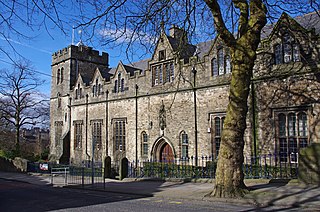
Lancaster Royal Grammar School (LRGS) is an 11–18 boys grammar school in Lancaster, Lancashire, England. Old students belong to The Old Lancastrians. The school's sixth form opened to girls in 2019. LRGS is also in the United Kingdom's thirty oldest schools.

Sutton Grammar School is a selective state grammar school for boys aged 11–18 with a coeducational sixth form. Located in South London, the school's main site is in Sutton and its playing fields are in neighbouring Cheam.

Bloxham School, also called All Saints' School, is a private co-educational day and boarding school of the British public school tradition, located in the village of Bloxham, three miles (5 km) from the town of Banbury in Oxfordshire, England. The present school was founded in 1860 by Philip Reginald Egerton and has since become a member of the Woodard Corporation. The current headmaster is Paul Sanderson, who took over from Mark Allbrook in 2013. The school has approximately 515 pupils.

The Skinners' School, is a British Grammar School with academy status for boys located in the town of Royal Tunbridge Wells, Kent, England. Established in 1887, the school was founded by the Worshipful Company of Skinners in response to a demand for education in the region. Today Skinners' remains an all-boys grammar school, recently awarded specialist status in science and mathematics in recognition of these disciplines' excellent teaching. The current enrolment is 1119 pupils, of whom around 326 are in the sixth form. The first headmaster was Reverend Frederick Knott, after whom Knott House is named. The current Headmaster is Edward Wesson.

Welbeck Defence Sixth Form College, formerly named and often referred to as simply Welbeck College, was an independent, selective sixth form college in Leicestershire, England. While run as a sixth form college, the school was an institution of the Ministry of Defence (MoD), and part of the Defence Academy of the United Kingdom.
Royal Russell School is an independent school in the Shirley area of Croydon, South London. It is a co-educational day and boarding school. The motto of the school is Non sibi sed omnibus meaning "Not for one's self but for all". The school is a member of the Headmasters' and Headmistresses' Conference. The patron of the school was Queen Elizabeth II.
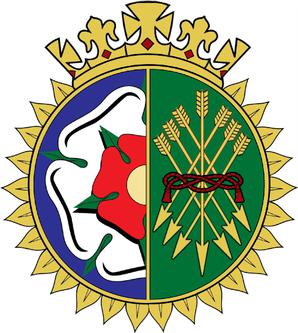
Queen Mary's Grammar School (QMGS) is a boys' grammar school with academy status located on Sutton Road, Walsall, England, about a mile from the town centre and one of the oldest schools in the country. The sixth form is coeducational.
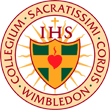
Wimbledon College is a government-maintained, voluntary-aided, Jesuit Roman Catholic secondary school and sixth form for boys aged 11 to 19 in Wimbledon, London.

The Royal Hospital School is a British co-educational fee-charging boarding and day school with naval traditions. The school admits pupils from age 11 to 18 through Common Entrance or the school's own exam. The school is regulated by Acts of Parliament.
Treorchy Comprehensive School is an English language, comprehensive school in the village of Treorchy, Rhondda Cynon Taf, Wales. The school is situated on the southern side of the valley, and is 500 metres in length from the main gate on Conway Road, Cwmparc, to the rear gate at Tylecoch Bridge, Treorchy.

Feni Girls' Cadet College is a military high school for girls, located in Feni Sadar Upazila, Bangladesh. Cadet colleges are autonomous residential institutions that impart an all round education to the young learners at the secondary and higher secondary level. The colleges are under the auspices of the Ministry of Defence and function under the direct supervision of the Adjutant General of the Bangladesh Army.

Rochester Grammar School often abbreviated to RGS is a grammar school for the education of girls between the ages of 11 and 18. It has academy status. It is now known as just "Rochester Grammar School" following the introduction of boys into the sixth form.
The Harvey Grammar School is located in Folkestone, Kent, England. It is a grammar school with academy status founded by the family of William Harvey in 1674.

Tulse Hill School was a large comprehensive school for boys in Upper Tulse Hill, in the London Borough of Lambeth, England. The school building had eight floors and served almost two thousand pupils. It opened in 1956 and closed in 1990. Notable alumni include Ken Livingstone, the former London Mayor, and poet Linton Kwesi Johnson.
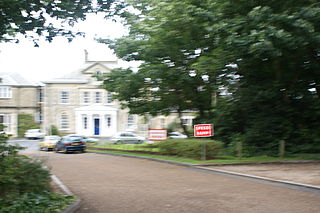
Ryde School with Upper Chine is a co-educational independent day and boarding school in Ryde, on the Isle of Wight. The school, founded in 1921, is a member of the HMC.

















